Tomo Bystedt is TaylorMade's Senior Director of Global Irons and when I attended the global launch of the 2017 M2 and new M1 irons in the USA, I caught up with him to discuss his face slots and cavities.
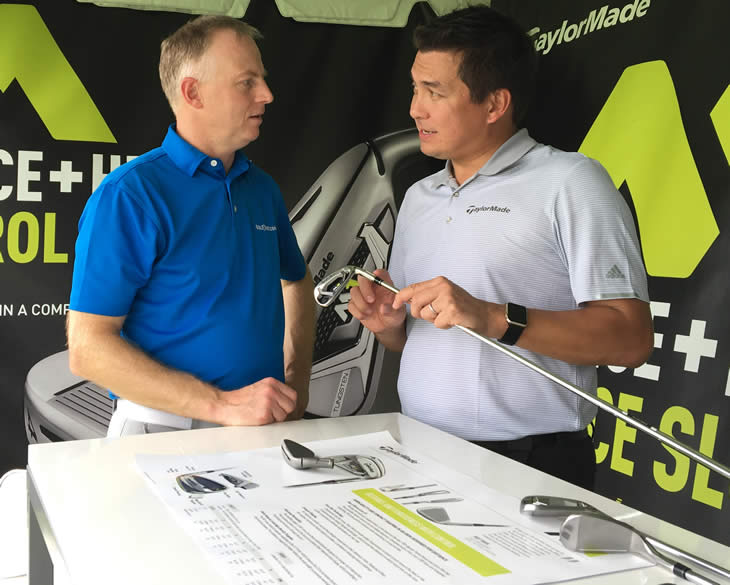
Hi Tomo. With the original M2 irons it wasn’t possible to include the face slots. What has changed to enable you to include face slots on this latest version?
The goal with original M2 was to make a fast faced iron and we were really building on the family of game improvement irons that we have had since the Burner. We tried to take that family and make it faster and faster to get to the COR limits.
That pursuit made the face thinner and thinner and on the original M2 we were at the COR limit, so if we had used face slots the face would have to be thickened to keep it legal which would have had a negative effect on our centre of gravity position.
At that point the engineering advance was not at a position to be able to re-jig the club to add the face slots and maintain the ultra-low CG we wanted for the high launch.
With the new M2 irons we had the opportunity to figure out how to make that work so what we did was we actually shallow the face down a little bit.
In the new M2 irons the face is shallower top to bottom which has a dual benefit in that it makes the face area a little bit smaller which makes the trampoline a little bit less flexible so we can now put the face slots in without having to make the face thicker.
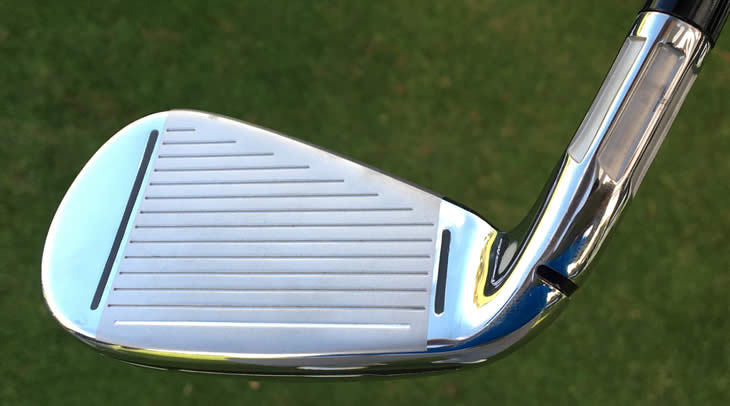
The secondary benefit of the shallower face is that the CG naturally drops because there is less weight higher up.
There are some other penalties with face slots too, in that to include them we have to put re-enforcements up high in the head to stop them from cracking which would also hurt CG a little bit.
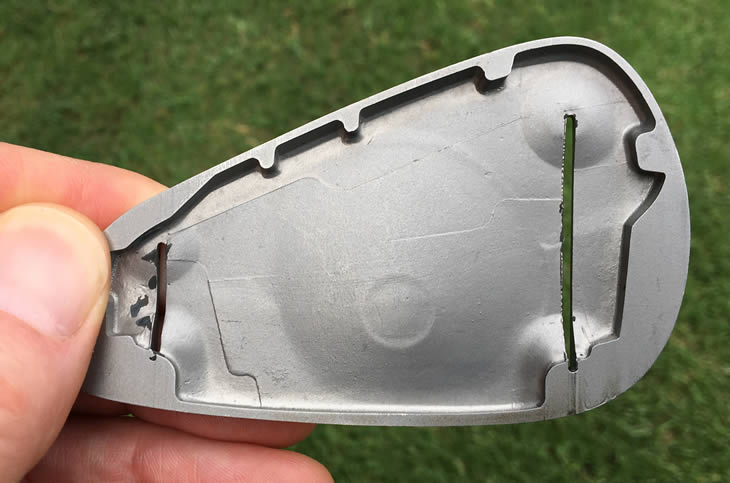
So our goal for the 2017 M2 iron was to put the CG so low that even adding the slots back in we were still at a lower CG than with the original M2 irons which we were able to do.
How did you manage to achieve that technically?
To do that we needed to save weight we could move lower in the club head, so we thinned out the entire top part of the head. This is something we have worked on with our factories to ensure they can cast something this thin in steel.
To do that you have to have very precise control of the temperature of your molten steel to make sure it fills in all the voids in the casting, so they were very difficult to cast compared to the original M2 where the top section is a bit thicker.
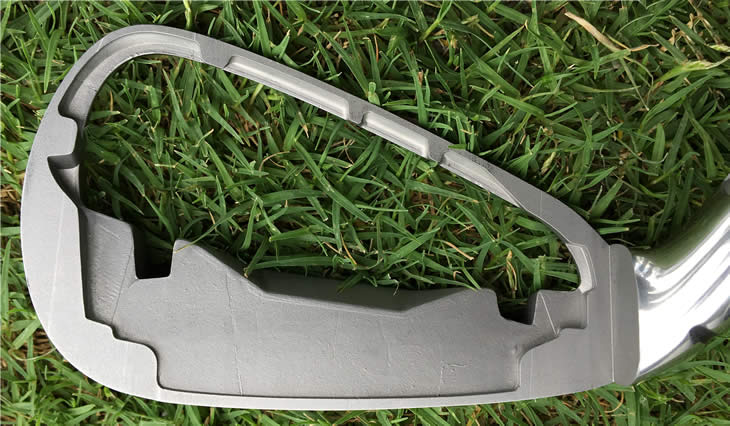
The other innovation that helped us was the hosel bending slot. This seems like an unrelated feature because essentially what this does it lets you bend the iron more easily in the custom fitting process, for example making the iron a degree more upright.
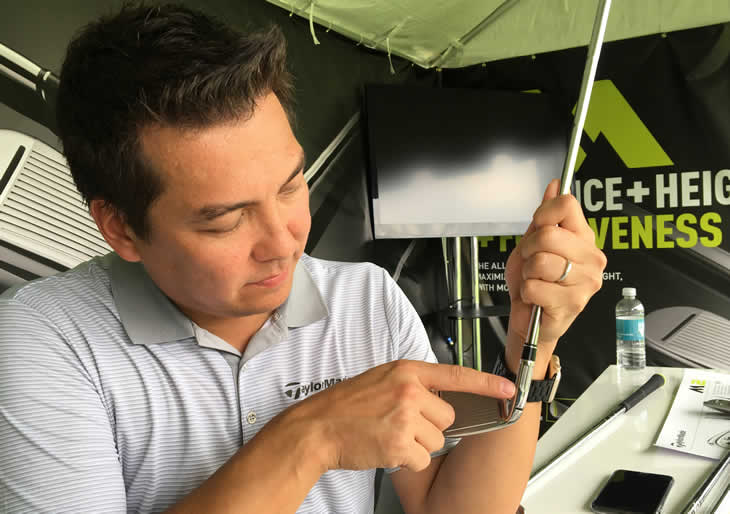
Typically the bending happens at the top near the shaft so on the original M2 we were restricted in how thin we could make the hosel from a durability standpoint. At some point if we made them too thin they would break when we tried to bend them.
With the bending slot we have moved the stress concentration lower we can make the hosel thinner as there is not stress on them when you bend the iron. So that was great innovation that had the dual benefit of easier bending for custom fitting and also lower CG.
So all these things – the lower profile, the thinner top line, and the bending slot weight saving – allowed us to put the face slots back into the club.
So really the advantage was not about speed, but about CG?
Yes. We were already at the COR limit so we didn’t need to chase COR, so we needed to get the CG lower because we knew the big performance benefit would be from being able to put the face slots back.
We have got to the point with CG that if you go much lower than where we have it now with the M2 irons, you are actually going to make the top of the face not work so well because you are moving the strike zone down.
You really want to have the CG where people hit the ball most often and right now it is in a really good place, 16.5mm up from the bottom, which is where most people tend to hit the ball when they hit it from the grass. Obviously if you tee the ball up you might hit it a little higher up the face, so that is really up to the player but most iron shots are struck off the grass.
How does the face slot improve performance for average golfers?
The M2 iron is designed around the use case of a typical golfer, the average player if you like, and one of the things with the face slot is how it improves the performance across the face, especially on the toe side, where there is more flexibility as the slot is a lot longer on that side. Co-incidentally for the average player (15-30 handicap) about three-quarters of shots are hit on the toe side of centre in our testing so it is a very nice alignment of the user pattern and the technology pattern to give you the most improvement.
The heel side doesn’t get as much benefit as the slot is so much shorter so it is just an incremental improvement there, but again the toe is where most players will gain the benefit anyway.
So the benefits of the slots are to give you more ball speed on off-centre hits?
Exactly. So having that benefit in the new M2 irons means we are going to be able to retain the height and the distance we had with the original M2, being as long or maybe even longer, but get this benefit over a larger area of the face thanks to the slots.
How does the Speed Pocket on the sole benefit the club?
With the new Speed Pocket we have also added a little bit of spin so the ball can land softer on the green. Again when you think about the use for irons, it is really about hitting greens and being able to stop the ball, especially when you get into the longer irons it becomes quite difficult.

It is always a balancing act getting the right loft, getting the right technology to be able to produce the spin and produce the launch to the retain the height that is so important for this category of golfer. Most players in the mid to high handicap range tend to hit it too low and struggle with height so building that in is important.
You talk about hitting it higher. Is that hitting it higher with more spin, the same spin or less spin?
Compared to the current M2 it is slightly higher spin, but not a lot. It is still very low spin compared to irons in general because they are low lofted irons compared to other irons. In our competitor set we are one of the lowest spinning traditionally, so that is why we have tried to get some spin back into the club because it helps this category of golfers get the ball into the air a little bit and also stop quicker.
It is a balancing act. With this club compared to our competitors we are somewhere in the middle with how much it spins, but we have the highest trajectory of all of those clubs in this category.
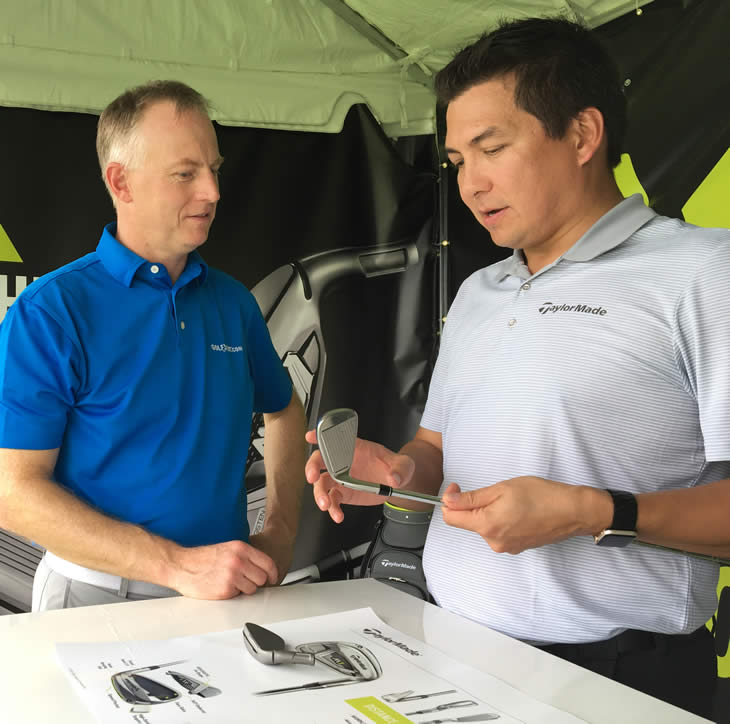
Why don’t the face slots and the Speed Pockets go all the way down through the set?
What actually happens is we evaluate every year where the COR is in each club. What happens is when you get to the 8-iron and below there is very little flex in the face at that point. The face is also a little bit thicker in those irons and the angle that the clubface hits the ball is such a shallow angle that the any benefits are very minimal.
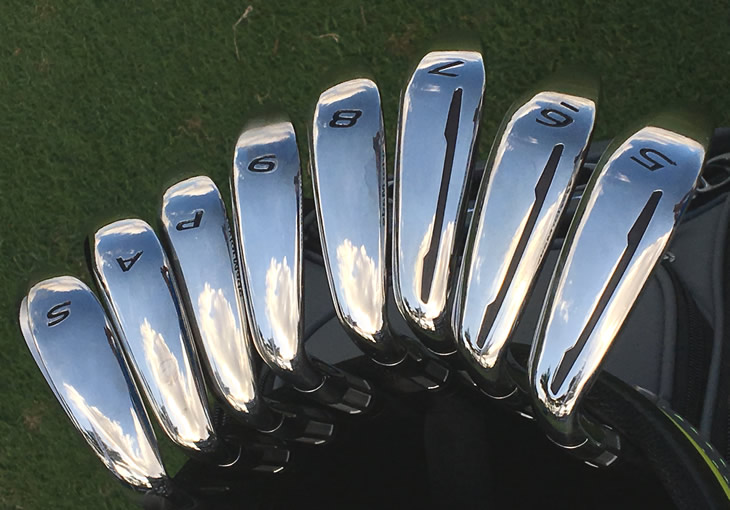
So in terms of manufacturing process and cost which is higher if you are putting in slots and pockets, we don’t want to do that for clubs where it doesn’t make any real difference to performance, so we can pass that cost saving down to the consumer.
The face slots go down to the 8-iron as testing shows us there is some benefit on the toe hits, in the region of a yard to a yard and a half on a toe hit, whereas in a 3-iron or a 4-iron it may be up to 5 yards more. Once you get to the 9-iron it is under a yard then you can argue that it is of no real benefit having them in there.
The same thing applies with the Speed Pocket where at some point in the set as the loft of the club increases the slot sits at such an angle that it doesn’t compress anymore, so the 7-iron is really the last club where it meaningfully compresses and even the 7-iron we have a little bit of a shorter slot than the longer irons. We try to use technology where it provides a benefit and not just have it there for the sake of having it there.
Moving onto the M1 irons, would I be right in thinking that this is really an M2 Tour replacement?
It fills that gap from a players' stand point in that it is a similar target group of golfer, the offset on the iron is similar, but most of the technology is new.
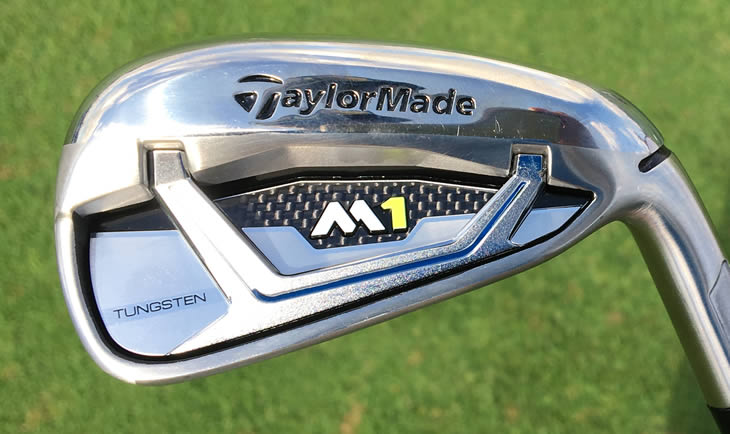
The obvious one is that the M1 irons have face slots. It is a multi-material product with tungsten in the toe. What we have done compared to the M2 Tour is we have saved a lot of weight at the top of the club with a 360 degree undercut.
We have a fluted hosel which we didn’t have on the M2 Tour so with all these weight savings we had to find a way to add that mass back into the head without making the sole bigger of the blade longer, so the tungsten helps us do that as well as create a higher moment of inertia as well as a lower CG.
That is really the difference between the M1 and the original M2 Tour. The shaping is a little bit different with a slightly thicker top line than the M2 Tour, the offset is the same and we made some improvements to the sole geometry.
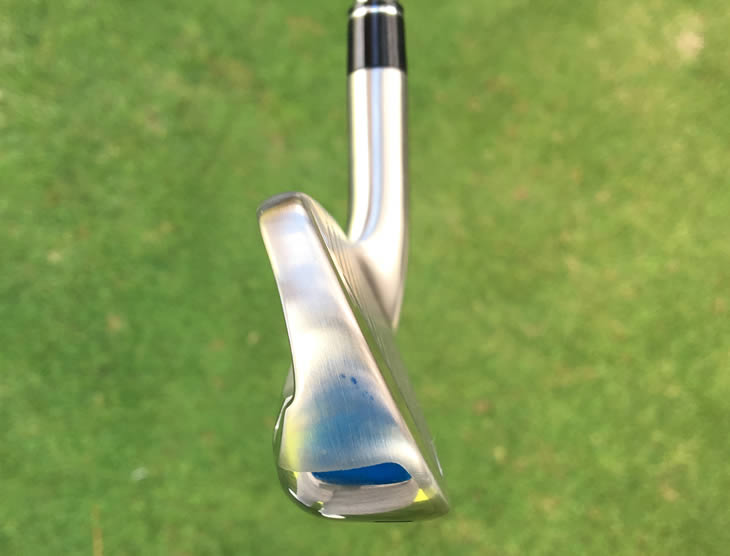
One of the new things we introduced with the M2 Tour was the blunted front of the sole, which we have refined in the M1 where it has a little bit of a flatter angle that cuts through the rough a little better.
We have kept a similar heel and toe radius on the sole which is relatively forgiving compared to a players iron which typically have a flatter sole, which better players like as they tend to sit closer to the ground and they like the look of the straighter leading edge. So for this player we wanted to combine the forgiveness of the grind of the sole with the a little bit more of a players look.
Why does the tungsten stop at the 7-iron and not go all the way down the set?
It is interesting the way the set is constructed here. What happens in the 8-iron is that the face starts getting taller and we were able to get to the weight without adding the tungsten. Typically in a set the soles get a little wider as move to the short irons so that allows you to put the extra mass in the sole.
What is interesting is that in the 7-iron there is a fairly large tungsten piece and the reason is the 7-iron, in terms of the progression of face thickness, has a face the same thickness as a 3-iron, which is 1.6 mm, super-thin across the long irons, and the 8-iron is where we start to make the face a little bit thicker at 2mm, so we don’t have the same amount of weight difference we have to make up.
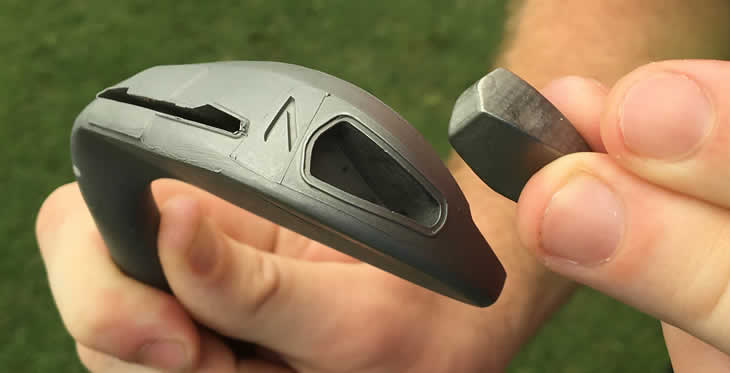
We also don’t have the undercut on the 8-iron either so again there is more weight in that area of the club. When you are getting to the short irons you are not really looking for distance, you want a little more spin on the product, and the interesting part of iron design is that the recipe for each individual club within a set of irons is a little bit different.
What you are trying to achieve with the 3, 4 and 5 irons is to get the ball in the air so that means a low CG but as you get to the shorter irons you want a little better feel and more workability and ideally more spin so you can hit a more controlled shot.
With the M1, why is the hosel only fluted on the back and not on the front?
This is purely a cosmetic thing. We did a lot player testing and got a lot of feedback and a lot of people with the M2 didn’t mind the look of the fluting around the whole hosel, but with the lower handicaps who may play the M1 irons, more people may care about having the traditional look.
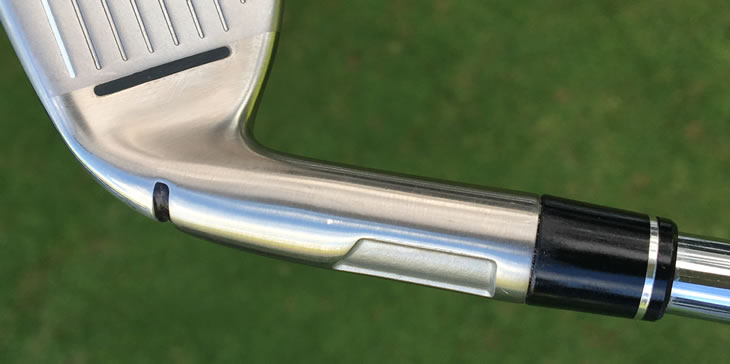
The difference in weight saving, 2.5 grams instead of 5 grams, is something we could deal with so it was really an aesthetic judgement call based on player feedback.
More From TaylorMade